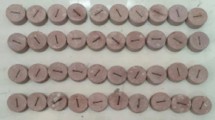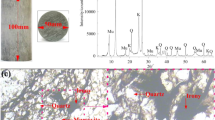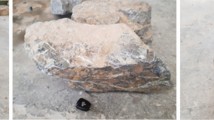Abstract
Design of primary heat transport (PHT) piping of pressurised heavy water reactors (PHWR) has to ensure implementation of leak-before-break concepts. In order to be able to do so, the ductile fracture characteristics of PHT piping material have to be quantified. In this paper, the fracture resistance of SA333, Grade 6 steel — the material used for Indian PHWR — under monotonic and cyclic tearing loading has been documented. An attempt has also been made to understand the mechanism responsible for the high fracture toughness of the steel through determination of the effect of constraint on the fracture behaviour and fractographic observations.
FromJ-R tests over a range of temperatures, it was observed that SA333 steel exhibits embrittlement tendencies in the service temperature regime. The fracture resistance of the steel is inferior in the longitudinal direction with respect to the pipe geometry as compared to that in the circumferential direction. Imposition of cyclic unloading during ductile fracture tests for simulation of response to seismic activities results in a dramatic decrease of fracture resistance. It appears, from the observations of effects of constraint on fracture toughness and fractographic examinations, that fracture resistance of the steel is derived partly from the inability of voids to initiate and grow due to a loss of constraint in the crack-tip stress field.
Similar content being viewed by others
References
ASTM1999E1820-99, Standard test method for measurement of fracture toughness (Philadelphia, PA: ASTM)
Dowling N E, Begley J A 1976 Fatigue crack growth during gross plasticity and the J-integral.Mechanics of crack growth ASTM STP 590, (Philadelphia, PA: ASTM) pp 82–103
Gullerud A S, Dodds R H 1995J-Q and toughness scaling model solution for M(T), DE(T), SE(B), SE(T) and C(T) specimens.Int. J. Fracture 72: R11-R21
Joyce J 1986 Development of a criterion for the effect onJ-R curve of elastic unloading,Proc. 18th Symposium on Fracture Mechanics (eds) D T Read, R P Read, ASTM STP 945 (Philadelphia, PA: ASTM) pp 647–662
Joyce J A, Link R E 1997 Application of two parameter elastic-plastic fracture mechanics to analysis of structures.Eng. Fracture Mech.57: 431–446
Kikuchi M 1997 Study on the effect of the crack length on theJ IC value.Nucl. Eng. Design 47:41–49
Kirk M T, Koppenhoefer K C, Shih C F 1993 Effect of constraint on specimen dimensions needed to obtain structurally relevant toughness measures.Constraint effects in fracture (eds) E M Hackett, K-H Schwalbe, RH Dodds, ASTM STP 1171 (Philadelphia, PA: ASTM) pp 79–103
Landes J D, Walker H, Clarke G A 1979 Evaluation of estimation procedures used in J-integral testing.Elastic-plastic fracture ASTM STP 668 (Philadelphia, PA: ASTM) pp 266–287
Lepik O E, Mukherjee B 1990Ductile fracture properties for assessing LBB issues in ferritic weldments.Int. J. Press. Vessel Piping 43: 285–300
Marschall C W, Wilkowski G M 1991 Effect of cyclic loading on ductile fracture resistance.J. Press. Vessel Tech. (Trans. ASME) 113: 358–364
Mogami K, Hayashi T, Ando K, Ogura V 1990 Elastic-plastic FCG and tearing instability behaviour under cyclic loads.Int. J. Press. Vessel Piping 44: 85–97
Roos E, Eisele U 1988 Determination of material characteristic values in elastic-plastic fracture mechanics by means of J-integral crack resistance curves.J. Testing Eval. JTEVA 16: 1–11
Singh P K, Chattopadhyaya J, Kushwaha H S, Tarafder S, Ranganath V R 1998 Tensile and fracture properties evaluation of PHT system piping material of PHWR.Int. J. Press. Vessel Piping 75: 271–280
Sumpter J D G 1987J c determination for shallow notch welded bend specimens.Fatigue Fracture Eng. Mater. Struct. 10: 479–493
Tarafder S, Ranganath V R 1997 Investigation on elevated temperatureJ-R behaviour of nuclear grade piping steel. Report No. F&F/BARC/JR/P2, National Metallurgical Laboratory, Jamshedpur
Author information
Authors and Affiliations
Rights and permissions
About this article
Cite this article
Tarafder, S., Ranganath, V.R., Sivaprasad, S. et al. Ductile fracture behaviour of primary heat transport piping material of nuclear reactors. Sadhana 28, 167–186 (2003). https://doi.org/10.1007/BF02717132
Issue Date:
DOI: https://doi.org/10.1007/BF02717132




